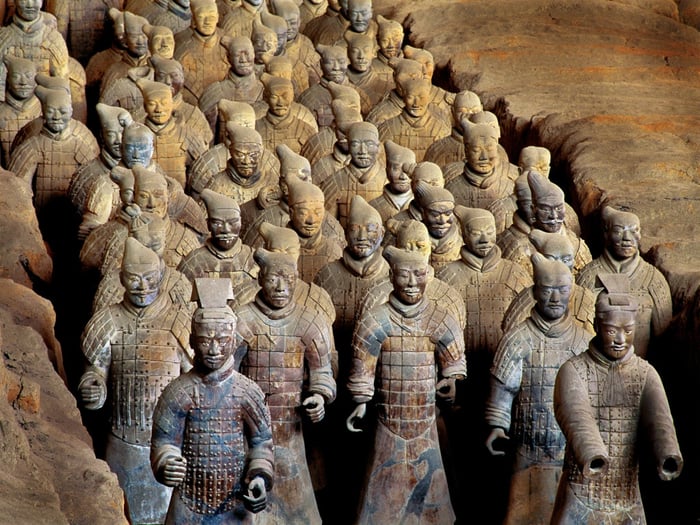The tomb of Qin Shi Huang, the first emperor of unified China, remains one of the most mysterious and awe-inspiring archaeological sites in the world. While the Terracotta Warriors, the life-sized statues created to guard the emperor’s afterlife, are the most famous relics from the site, the tomb itself holds even deeper secrets, some of which have yet to be fully uncovered.
The Enigmatic Tomb and Its Legendary Features
Ancient historical texts, including the writings of the Han dynasty historian Sima Qian, describe a tomb unlike any other. The emperor’s burial complex is said to contain a replica of his entire empire, complete with life-like rivers made of mercury. These rivers are believed to represent the Yellow and Yangtze Rivers, two of China’s most important waterways. Additionally, the ceilings of the tomb were reportedly adorned with pearls to create an artificial night sky, a feature that underscores the grandeur and cosmic vision of Qin Shi Huang’s afterlife.

Modern scientific investigations support some of these ancient descriptions. High levels of mercury have been detected in the soil surrounding the tomb, which suggests that the legendary mercury rivers may indeed exist beneath the surface. This discovery not only validates the historical accounts but also offers a glimpse into the emperor’s belief in the power of mercury, a substance he believed could grant him immortality.
Mercury and Immortality: A Fatal Obsession
Qin Shi Huang’s obsession with immortality played a pivotal role in both his life and death. It is widely believed that the emperor consumed mercury-based elixirs, hoping they would grant him eternal life. However, mercury is highly toxic, and it is likely that his ingestion of mercury contributed to his untimely demise. This tragic irony highlights the emperor’s belief in the elixir of life and his ultimate failure to achieve his goal.

In addition to his attempts at immortality, Qin Shi Huang ensured that his tomb would be protected by a complex system of defenses. The tomb was reportedly equipped with crossbows that would shoot anyone who dared to enter. These deadly traps serve as a reminder of the emperor’s need for absolute control, even in death, and his fear of the afterlife.
Looting, Destruction, and the Sealed Tomb
Shortly after the completion of the tomb around 210-209 BCE, it was looted and set on fire, leading to the collapse of the roof. The warriors, who had once stood in perfect formation, were buried beneath the rubble. While many of the Terracotta Warriors have been painstakingly restored, the tomb itself remains largely unexplored. Its internal chambers are sealed, and the site is thought to be well-protected by the natural landscape.

Despite efforts to excavate and explore the emperor’s tomb, it has not yet been opened. This has led to ongoing speculation about the treasures and artifacts that remain hidden inside, including the supposed mercury rivers, the pearl-adorned ceiling, and other legendary elements described in historical texts.
A Glimpse Into Ancient China’s Afterlife Beliefs
Qin Shi Huang’s tomb provides invaluable insight into ancient Chinese beliefs about the afterlife and the lengths to which rulers would go to ensure their eternal power. The emperor’s desire to control both his mortal and immortal existence through elaborate tomb defenses and mercury-based elixirs highlights the deeply rooted belief in the importance of life after death. His tomb is not only a reflection of his own vision of the afterlife but also a testament to the impressive engineering and artistic achievements of ancient China.
Today, the tomb of Qin Shi Huang continues to captivate historians, archaeologists, and visitors alike, offering a glimpse into a world of luxury, mysticism, and power. While much remains hidden beneath the surface, the tomb and the Terracotta Army stand as a lasting legacy of the first emperor of China, whose reign continues to influence Chinese culture and history.

